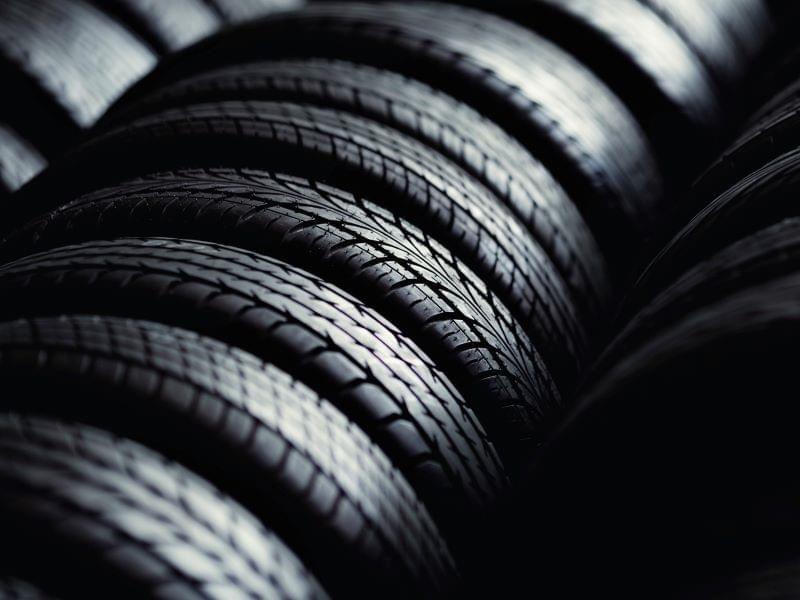 Tire-derived carbon black expert Martin von Wolfersdorff is the author of new Smithers report The Impact of Sustainability on Carbon Black to 2041. We spoke with him about future market dynamics and industry outlook.
Tire-derived carbon black expert Martin von Wolfersdorff is the author of new Smithers report The Impact of Sustainability on Carbon Black to 2041. We spoke with him about future market dynamics and industry outlook.
Martin specialises in recovered carbon black, decarbonisation, carbon capture, methane pyrolysis and circular economy due diligence, green carbon blacks and carbon black industry intelligence.
What do you see as the major trends affecting the global carbon black market?
The development of recovered carbon black is a major trend in the tire industry. However, less than 1% of all carbon black material used globally in new tyre production comes from recycled end-of-life tyres, due to a weak supply pipeline for the recovery and reuse of carbon black, according to research developed by tire industry majors.
Recovered carbon black presents the opportunity to reduce the tire industry’s reliance on petrochemicals by replacing a portion of traditional carbon black with a sustainable and circular alternative without introducing performance trade-offs. Additionally, using recovered carbon black in new tire production reduces CO2 emissions by up to 85% compared to virgin materials.
What do you see as future challenges?
Automotive OEMs and tire producers are challenged to focus greater attention on reducing the greenhouse gas emissions of tire raw materials and tire production. For example, tire raw materials amount to 10% of the CO2 emissions of an internal combustion car, but to 24% of the CO2e emissions of an electrical vehicle.
Standard furnace carbon blacks, which currently dominate the carbon black industry, are produced from fossil feedstocks, while most leading tire producers now have defined objectives for recycled and bio-based content in their products. This is giving rise in interest in alternative rubber fillers that have an improved carbon footprint and are produced from recycled or bio-based feedstocks. Meeting production demand for these more sustainable materials is a key industry challenge.
What can readers expect from this report?
This report details the spike in interest in sustainably produced carbon black and its role in the market as well as its part in the meeting sustainability goals of global tire producers. Alternative rubber fillers are examined in the new study with focus on their improved carbon footprint and development from recycled or biobased feedstocks. How these products will increasingly meet the circular economy requirements of the automotive and tire industries is addressed.
The regulatory landscape and future outlook of the sustainable carbon black market are also reviewed along with the viability of current production methods of sustainable carbon black.
What types of sustainable carbon black are examined in the report?
This report analyses four types of sustainable carbon blacks – methane pyrolysis carbon black, recovered carbon black, renewable carbon black and circular carbon black – for performance, sustainability, cost, availability and potential market development up to 2041 along with their technology readiness levels.
For example, recovered carbon black is at a technology readiness level (TRL) that ranges from TRL 6 to TRL 9, which includes demonstration and full-scale engineering. There are more than 900 carbon black companies globally, and about 20 of these are regarded as noteworthy suppliers of recovered carbon black.
What pressures are being placed on the carbon black industry as the demand for sustainability grows?
Carbon black produced with the furnace process is still the dominant filler used in tyres, but many in the industry see this changing on account of sustainability trends as well as preference for, or availability of, alternatives consistent with the use of more energy-efficient tyres.
Governments are now legislating away from the “extract-make-use-discard” economic model and moving toward the circular economy, which involves material recovery and reuse.
Additionally, the effect of gaseous emissions on the climate is a major concern that is putting pressure on the tyre and tyre materials markets. This focus on greater sustainability is forcing development of alternatives that can meet demand for the large quantities of materials used each year to make tyres.

 Tire-derived carbon black expert Martin von Wolfersdorff is the author of new Smithers report The Impact of Sustainability on Carbon Black to 2041. We spoke with him about future market dynamics and industry outlook.
Tire-derived carbon black expert Martin von Wolfersdorff is the author of new Smithers report The Impact of Sustainability on Carbon Black to 2041. We spoke with him about future market dynamics and industry outlook.